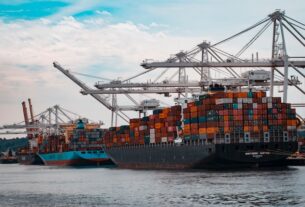It would be an understatement to say that for retail the last two years were crazy. Consumers’ habits and demand changed so many times that organisations were in a constant mode of catching-up and adapting. But it would also be an understatement to say that most performed incredibly well – the industry is resilient and strong. We asked Sandra Rothbard from Freight Matters about her thoughts on the retail logistics trends in 2022. Here are her picks.
JOIN US ON THE 8th MARCH TO TALK ABOUT WAREHOUSING & MICRO-FULFILMENT! REGISTER BELOW!

- People will continue to order online
There were many people that never shopped online before the pandemic. Whether they weren’t comfortable using the technology, wanted to be able to choose their food in person (like produce) or they wanted to support local businesses who don’t always have online shopping available.
Now that many have grown accustomed to this, many will continue even as things begin to get better (whenever that may be).
2. Growing on-demand delivery expectations from customers
Many businesses around the globe are coming on the market promising 15 minute grocery delivery (for example). Yet many of them have terrible unit economics and are losing money.
Like many startups in other fields, these are businesses that more or less make promises, deliver on those promises but then will have to fold. This leaves customers who have grown accustomed to fast turn around to then be quite disappointed.
3. More fulfillment centers will be built closer to the customer
Ideally these would be micro fulfillment working with smaller consolidation centers but in 2020/2021 major retailers scooped up a lot of land to build these types of facilities making a major impact on the fabric of city life (for the worse). This may continue into 2022.
My dream for 2022 would be:
Shippers to be able to pass the costs of delivery down to the customer
At the very least, have retailers offer more sustainable shipping options on their websites. Show exactly what the impacts are so customers can choose to support consolidated deliveries and not demand same day/next day when it isn’t actually needed.
Hopefully there will be more independent retailer websites or at least consortia of smaller retailers to compete with Amazon.
Much in the same way that the public has finally realized how much money restaurants lose when orders come through a large delivery app vs. directly from their site, I hope the public realizes the negative consequences of their retail ordering actions. ✷


